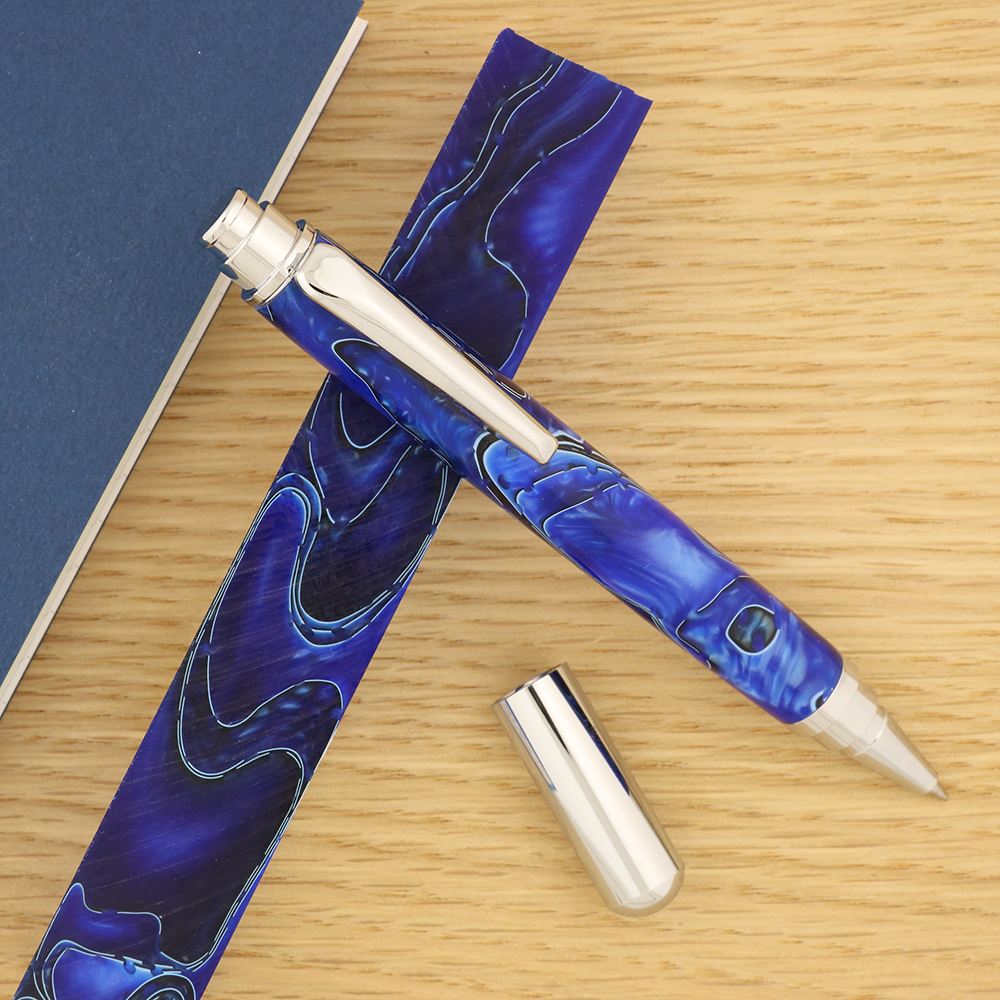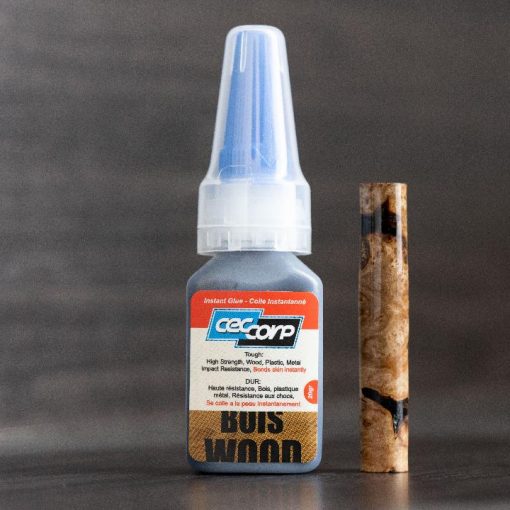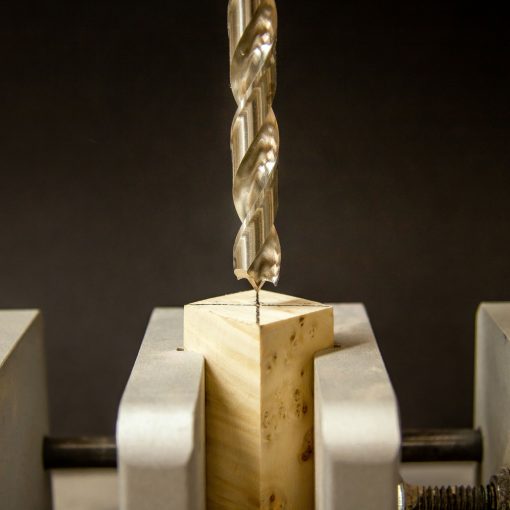
Tips for Making Custom Pens
Trying to pick the perfect pen blank for your project? Overwhelmed by the sheer variety of materials? Can’t decide if your calligraphy pen set should be in Amethyst Mine poly resin or Harley Flame acrylic? William Wood-Write is here to help! It can be tough choosing the right pen blank for your project, but knowing the ins and outs of the different types of pen blanks can help you choose the pen blank that will make your project shine!
What’s poly resin?
Poly resin is a durable synthetic resin that, when dried, becomes enforced. For those interested in the science behind making poly resin: polyols (such as glycol or ethylene glycol) is combined with a dibasic acid (such as phthalic or maleic acid) to make an unsaturated resin, which a hardening chemical is then added to. When this hardening chemical is added to the mixture, the chemical reaction taking place creates the final poly resin pen blank!

Why use poly resin?
There are many benefits to using a poly resin pen blank for your custom pen:
- It is incredibly durable when finished – poly resin holds up well against damage (including water damage), wear, or age!
- It is highly customizable – due to the synthetic nature of poly resin, these pen blanks come in a wide variety of colors and patterns to make your favourite pen pop!
- After a wet sand with micro mesh, you can leave these blanks without a finish if you prefer a more matte look, or add 1 coat of HUT Ultra Gloss on top for a glossy finish.
While poly resin pen blanks are strong and come out looking like porcelain, there are also some challenges to consider when using poly resin for your project:
- It’s pricey – the complex manufacturing process involved in creating poly resin means that it does cost more than regular acrylic, but you’ll feel the difference when you pick up a finished pen. Poly resin weighs significantly more than a standard acrylic pen blank, so if you want a more luxury feel for a rollerball or fountain pen, poly resin makes for a great choice.
- It isn’t the easiest to turn – turning poly resin pen blanks can be a challenge due to their fragility and resistance to stretching prior to being dried. This means having sharp chisels (preferably carbide) is key. We offer a lightweight set of chisels designed in Canada called the Accu-cut that are light in the hand to keep turning feeling natural. Keep your chisel sharp with a diamond sharpening stone and lapping fluid before starting to turn. Turn your barrels at a high speed and take very light cuts. These pen blanks can be prone to shattering and this is almost always caused by gouging.
What is Acrylic?
Acrylic is a plastic polymer material that becomes pliable upon heating and hardens upon cooling. This means if you’re putting too much pressure on your mandrel while your barrel is on the lathe, you could potentially overheat and warp your blank. This typically happens turning sanding if you don’t give your blanks a break to cool down. Abranet mesh will help you out in this case. Abranet sheets are porous, allowing debris to pass through and helping to disperse heat (unlike regular sandpaper).
Acrylic blanks, unlike poly resin, are created by melting the acrylic material down, pouring it into a mold, and letting the material dry back into its hardened form. In other words: Acrylic doesn’t go through the complex chemical reaction that poly resin does during the manufacturing process.

Why use acrylic?
As with poly resin pen blanks, acrylic pen blanks also come with many advantages:
- They are much more cost-effective – acrylic pen blanks cost much less than poly resin pen blanks, making them a great choice for your first custom pen!
- They are very durable against wear – acrylic pen blanks will not yellow with exposure or crack with wear!
- They are more forgiving for beginner pen turners – acrylic pen blanks are more resistant to chipping and cracking during the turning process!
Your customers will love them! Through years of feedback we have found that customers of turners love to opt for projects like the seam rippers made with acrylic blanks. The huge variety of colours make each project incredibly unique to that person.
Of course, there are also challenges that accompany choosing an acrylic pen blank for your custom pen:
- They stink! You may notice after turning and sanding your acrylic pen blank that your shop smells like you’ve just walked into a nail salon. Doing a wet sand will help to lessen the smell by keeping the blank nice and cool in the final stages of the turning process.
- They are prone to scratches during the turning process – be aware that if your tools are not sharp enough or your micro-mesh is too coarse, you may scratch the pen blank. Having the sharpest tools possible and fresh Abranet mesh and Micro mesh will of great benefit for this project.
We recommend starting with an acrylic pen blank and getting used to the feel of turning with plastics before moving onto a poly resin or any hand-poured acrylic like our Lava Lamp or Fusion collections that have a higher price tag. With these, practice makes perfect but having the ability to turn an acrylic blank expands the variety and possibilities of combinations that you can create!
Use our colour filter to start browsing our large selection of acrylics and poly resin blanks to help you narrow down exactly what you’re after. If you’re looking for tips on pairing with pen kits, or you’d like a bit more information on turning acrylics send us an email at williamwoodwrite@penblanks.ca
Subscribe to our newsletter to get all the deals! We promise we won’t bother you – only one email a week on Sundays to enjoy with your morning coffee.








